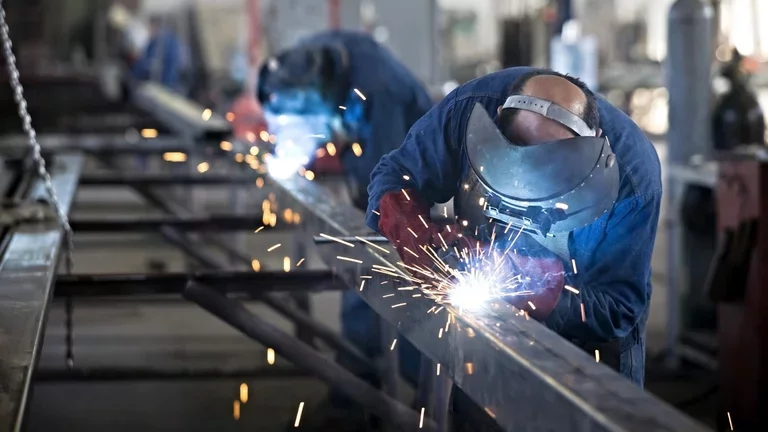Metal Fabrication: Key Processes, Tools, and the Role of Industrial Gases

Metal fabrication is a value addition in the engineering process that involves cutting, shaping, and assembling raw materials into finished products or structures, or components or parts thereof. This process is so versatile that it can be said that it applies to every industry of construction from manufacturing to automotive. Metal fabrication ensures the custom-built and long-lasting solutions that can be produced for various disciplines-from infrastructure up to those highly complicated machines. This is a boon as it can design and manufacture components to a large extent within tolerance limits.
Key Processes in Metal Fabrication
Fundamentally, metal fabrication consists of various procedures which serve specific purposes; they include:
- Cutting: Precision material shaping using techniques like laser cutting or plasma cutting would work wonders.
- Welding: Joining metal parts makes them strong and forms solid structures.
- Bending and shaping: Metal sheets or rods are molded into the desired configuration.
- Assembling: Combine various components to make a finally functional product.
The above-mentioned require skill and precision hence expertise should be an integral part of quality fabrication work.
The Role of Industrial Gases in Metal Fabrication
Industrial gas use consists not only of the fabrication of metals but also of increased productivity while ensuring the quality of the work. These gases are:
- Welding Gas: Shielding gases like argon or carbon dioxide are crucial in welding processes to prevent oxidation and ensure clean welds.
- Industrial Oxygen: it is used for cutting and heating, this gas makes the flame temperature rise for quick and efficient work.
- Nitrogen and Other Gases: Often used in laser cutting for high-quality finishes.
Industrial gas increases not only efficiency in work but also safety in the process by reducing defects of materials and smoothness of the operations.
Applications of Welding Gas in Metal Fabrication
It is welding gas that ensures the success of a particular fabrication project.
- Shielding the weld zone: It helps to prevent contamination during the welding process, resulting in high-quality joints.
- Enhancing stability: It considers even pressure flow to the tip for steady conditions during precision work in critical applications.
- Reduction of spatter: It produces a clean weld, saving effort in finishing work and making the overall weld more visually appealing.
Thus, proper selection and usage of welding gases are necessary for obtaining good results in the construction and fabrication of metals.
Why Industrial Oxygen is a Game-Changer
Industrial oxygen is among the many industrial gases with great versatility and significance. It has different applications in the metalwork industry, including:
- Oxy-Fuel Cutting: This is a high-temperature flame fueled by oxygen that cuts rapidly and effectively through hefty metals.
- Heating and Preheating: Makes malleable metals to shape and bend.
- Increased Efficiency: Lowers fuel consumption and increases the speeds of the processes.
With the help of industrial oxygen, fabricators can work within very demanding times without compromising on quality or safety.
Tools and Resources for Successful Metal Fabrication
To achieve precision in metal fabrication, the right tools and materials are essential. Commonly used tools include:
- Cutting tools like plasma cutters and shears.
- Welding machines paired with the appropriate welding gases.
- Advanced measurement tools like digital levels and laser distance meters for accuracy.
When paired with reliable industrial gas supplies, these tools ensure seamless fabrication workflows.
How Air Liquide Impacts Metal Fabrication
Air Liquide is a world leader in industrial gases, providing a wide range of innovative solutions that greatly improve metal fabrication processes:
- High-quality gases: Gases for precise cutting, welding, and heating applications, these are premium industrial gases or very high-quality oxygen and welding gases.
- Innovative technology: This is being developed that includes advanced gas solutions aimed at efficiency improvements, with reduced energy use, and ensuring safety within the fabrication workflow.
- Custom Tailored Support: Technical expertise coupled with the design of individualized delivery systems for gas supply as per specific industry needs, from small workshops to mass production.
- Enhanced Productivity: With optimized supply and usage of gases, Air Liquide helps fabricators achieve both faster and more reliable results.
- Sustainable focus: Providing more eco-friendly, cleaner, and efficient gases to not harm the environment during metal fabrication.
Empowered businesses put a premium on their precision, and through Air Liquide's offerings, fabricators can enhance their quality and sustainable measures in their projects.
Elevate Your Projects with Metal Fabrication Expertise
The backbone of many industries, metal fabrication requires great skills coupled with the latest technology to produce durable and functional products. One of the main features that enhance the productivity and quality of the fabrication process is a strategic resource used, such as industrial oxygen and welding gas.
From machining intricate components to constructing large structures, use the correct tools, gases, and skills for the best results.